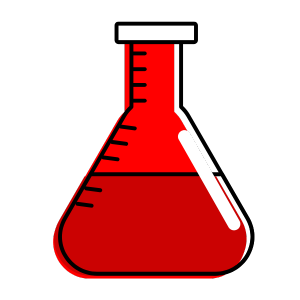The Dirty List
What’s Hiding in Your Food?
Expose the hidden dangers in your food and discover healthier choices to protect your well-being.

Do you know what’s really in your food? Many everyday items contain hidden dangers—additives and chemicals linked to obesity, diabetes, heart disease, and more. These harmful ingredients often hide in plain sight, even in foods you think are healthy.

Why It Matters Your health starts with what you eat. Understanding where these ingredients hide and their impact empowers you to make better choices for yourself and your family.

Take Control Today Explore the Dirty List below to identify harmful ingredients, learn their risks, and discover healthier alternatives.
Description: High fructose corn syrup (HFCS) is a sweetener derived from corn starch that has undergone processing to convert some of its glucose into fructose. This transformation enhances its sweetness and makes it a popular choice in the food industry due to its low cost and ability to preserve products longer. HFCS is often used as an alternative to sucrose (table sugar) in a variety of processed foods and beverages.
Found In:
- Soft drinks and fruit-flavored beverages
- Packaged snacks and candies
- Baked goods such as cookies, cakes, and bread
- Condiments like ketchup and salad dressings
- Breakfast cereals and bars
Health Impact: High fructose corn syrup has been associated with numerous health issues, including obesity, diabetes, and heart disease. Its high fructose content can lead to insulin resistance, increased fat storage, and elevated triglyceride levels in the bloodstream. Additionally, HFCS consumption is linked to increased appetite and overall caloric intake, which can contribute to weight gain and metabolic disorders.
Healthier Alternatives: Instead of products containing HFCS, consider:
- Beverages sweetened with natural sugars like cane sugar or honey
- Fresh fruit or fruit juices without added sugars
- Homemade snacks using natural sweeteners such as maple syrup or agave nectar
- Products labeled “no high fructose corn syrup” or “HFCS-free”
- Whole foods and minimally processed products
Scientific Evidence:
- Obesity and Metabolic Disorders: Studies have shown a correlation between HFCS consumption and obesity, diabetes, and metabolic syndrome. Increased fructose intake can lead to insulin resistance and higher fat accumulation. Source
- Heart Disease: Research indicates that high consumption of fructose can elevate triglyceride levels and contribute to cardiovascular disease. Source
- Liver Health: Excessive fructose intake is linked to non-alcoholic fatty liver disease (NAFLD), as it promotes fat buildup in the liver. Source
Description: Hydrogenated soybean oil is a type of fat that has undergone a hydrogenation process to convert liquid vegetable oil into a solid or semi-solid form. This process extends the shelf life of products and improves their texture. However, it also results in the formation of trans fats, which are known to have negative health effects.
Found In:
- Margarine and shortening
- Packaged snacks and baked goods
- Fried foods
- Microwave popcorn
- Coffee creamers
Health Impact: Hydrogenated soybean oil contains trans fats, which have been linked to various health problems. Trans fats can raise LDL (bad) cholesterol levels and lower HDL (good) cholesterol levels, increasing the risk of heart disease. They are also associated with inflammation, insulin resistance, and an increased risk of developing type 2 diabetes.
Healthier Alternatives: Instead of products containing hydrogenated soybean oil, consider:
- Olive oil or avocado oil for cooking and baking
- Butter or ghee instead of margarine
- Nut butters or coconut oil as spreads
- Homemade snacks made with natural ingredients
- Products labeled “trans fat-free” or “no hydrogenated oils”
Scientific Evidence:
- Heart Disease: Studies have consistently shown that trans fats increase the risk of heart disease by raising LDL cholesterol and lowering HDL cholesterol. Source
- Inflammation and Insulin Resistance: Research indicates that trans fats contribute to inflammation and insulin resistance, both of which are risk factors for type 2 diabetes. Source
- Regulations: Many countries have banned or limited the use of trans fats due to their health risks. The U.S. FDA has determined that partially hydrogenated oils are not “Generally Recognized As Safe” (GRAS) for any use in food. Source
Description:
Found In:
Health Impact:
Healthier Alternatives:
Scientific Evidence:
Description: Potassium bromate is a chemical additive used to improve the texture and rising capabilities of bread and other baked goods. It helps create a more uniform and desirable product by strengthening the dough and promoting a higher rise during baking. Despite its functionality in baking, potassium bromate has raised significant health concerns, leading to its ban in many countries.
Found In:
- Commercial bread and rolls
- Pizza dough
- Packaged flours and baking mixes
Health Impact: Potassium bromate has been linked to several health issues, primarily due to its classification as a potential carcinogen. It can cause tumors in the thyroid and kidneys and has been associated with an increased risk of cancer in animal studies. Additionally, exposure to potassium bromate can result in respiratory and skin irritation.
Healthier Alternatives: Instead of products containing potassium bromate, look for:
- Breads and rolls labeled “unbromated”
- Homemade bread using unbromated flour
- Baked goods made with ascorbic acid (Vitamin C)
- Products containing malted barley flour or natural enzymes like amylase
Scientific Evidence:
- Cancer Risk: Potassium bromate has been shown to cause tumors in animal studies. The International Agency for Research on Cancer (IARC) has classified it as a possible human carcinogen. Source
- Regulations: It is banned in the European Union, Canada, Brazil, and China due to its health risks. In the U.S., its use is regulated, and efforts are made to reduce or eliminate its presence in food. Source
- Human Studies: Although direct evidence in humans is limited, the substantial findings from animal studies highlight significant risks. Source
Description:
Found In:
Health Impact:
Healthier Alternatives:
Scientific Evidence:


